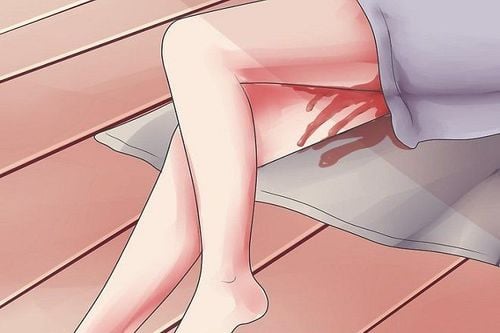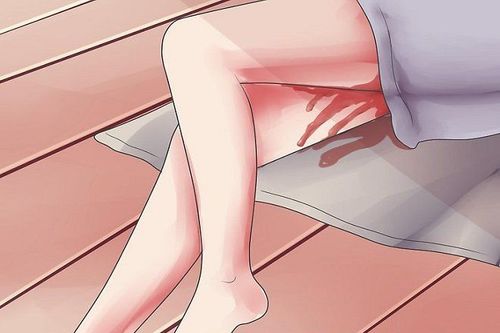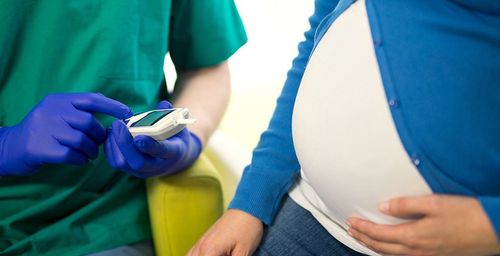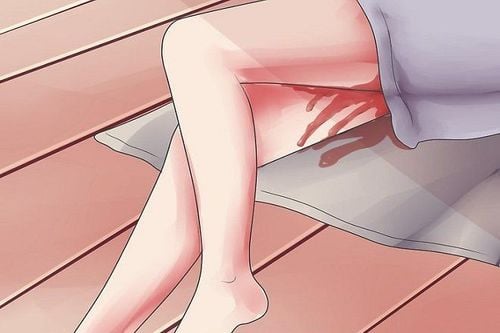This is an automatically translated article.
The article is professionally consulted by Master, Doctor Ly Thi Thanh Nha - Department of Obstetrics and Gynecology - Vinmec International Hospital Da Nang.
Postpartum uterine atony occurs when a pregnant woman's uterus cannot retract after childbirth, which can lead to a very dangerous complication of postpartum haemorrhage in obstetrics.
1. What is postpartum uterine atony?
Postpartum uterine atony is a dangerous condition for women after childbirth. Uterine atony occurs when the mother's uterus cannot retract after childbirth, which can lead to complications of postpartum haemorrhage, which is very dangerous for the mother's life.
Normally, the uterine muscles after giving birth will tighten or contract to shed the placenta. The contraction of the uterus will tighten the blood vessels attached to the placenta, helping to prevent bleeding. If for some reason causing uterine atony postpartum, the uterine muscles do not contract strongly enough, the blood will continue to flow freely, most likely leading to hemorrhage, excessive blood loss.
Postpartum women with uterine atony need emergency treatment as soon as possible to stop bleeding and replenish lost blood. Postpartum haemorrhage is a rather dangerous situation, even a life-threatening situation for the mother. However, with early detection and timely treatment, a good recovery is possible.
2. Postpartum uterine atony symptoms
The main symptom of uterine atony after childbirth is that the uterus is inelastic and soft and flabby after birth. Signs of this condition include:Severe and uncontrolled vaginal bleeding after delivery; Lower blood pressure; sweating, dizziness Increased heart rate; Abnormal uterine pain, abdominal pain, back pain; The solid mass above the pubic bone is not palpable. When the symptoms of postpartum uterine atony are detected, the patient needs early intervention to avoid complications of postpartum haemorrhage.

3. Causes of uterine atony
The following are some common causes of uterine atony:
The uterus is overstretched or overgrown; Using oxytocin, administering general anesthesia, or taking other medications during labor; Prolonged labor; The time of labor is too fast; Pregnant women give birth actively or are stimulated labor quickly; Cases of pregnant women at high risk of postpartum uterine atony, including:
Multiple pregnancy: such as twins, triplets; The baby is larger than average size compared to other babies; Pregnant women over 35 years old; Obese women; The mother has polyhydramnios ; The mother has given birth many times; However, postpartum uterine atony can also occur in women who do not have any of these risk factors.
4. Diagnosis of uterine atony
Uterine atony in postpartum women is usually diagnosed when the uterus is soft, pasty and bleeding heavily after a pregnant woman gives birth. In addition, in some cases, the doctor must perform a physical exam to rule out other causes of blood loss, such as cervical laceration, vaginal tear, and retained placenta.
The following indicators are commonly used to evaluate in the definitive diagnosis of postpartum uterine atony:
Blood loss Maternal heart rate; Blood pressure; Red blood cell count; Coagulation factors ;
5. Prevention of uterine atony after childbirth

During labor and delivery, the doctor will continuously monitor the mother's labor prognosis and assess the amount of bleeding right after birth so that bleeding can be detected in time. In case of necessity, oxytocin is injected right after the birth to stimulate the mother's uterus to contract and prevent bleeding. Besides, the postpartum uterine massage also somewhat reduces the risk of uterine atony and should be done regularly.
Vinmec International General Hospital is providing Maternity - Labor Care Program with outstanding quality and reputation. When participating in this program, pregnant women can be completely assured of their labor process, not only ensuring the highest safety but also focusing on bringing maximum comfort and comfort to the mother.
Master. Doctor. Ly Thi Thanh Nha has worked at Hue University of Medicine and Pharmacy Hospital and Quang Tri Provincial General Hospital before working at Vinmec Danang International General Hospital as it is today.
Doctor Nha has strengths and experience in diagnosing, monitoring and treating pregnancy, pregnancy pathology. Pregnancy screening. Perform caesarean section techniques. Laparoscopic surgery to treat ovarian cysts, ectopic pregnancy.
Please dial HOTLINE for more information or register for an appointment HERE. Download MyVinmec app to make appointments faster and to manage your bookings easily.














